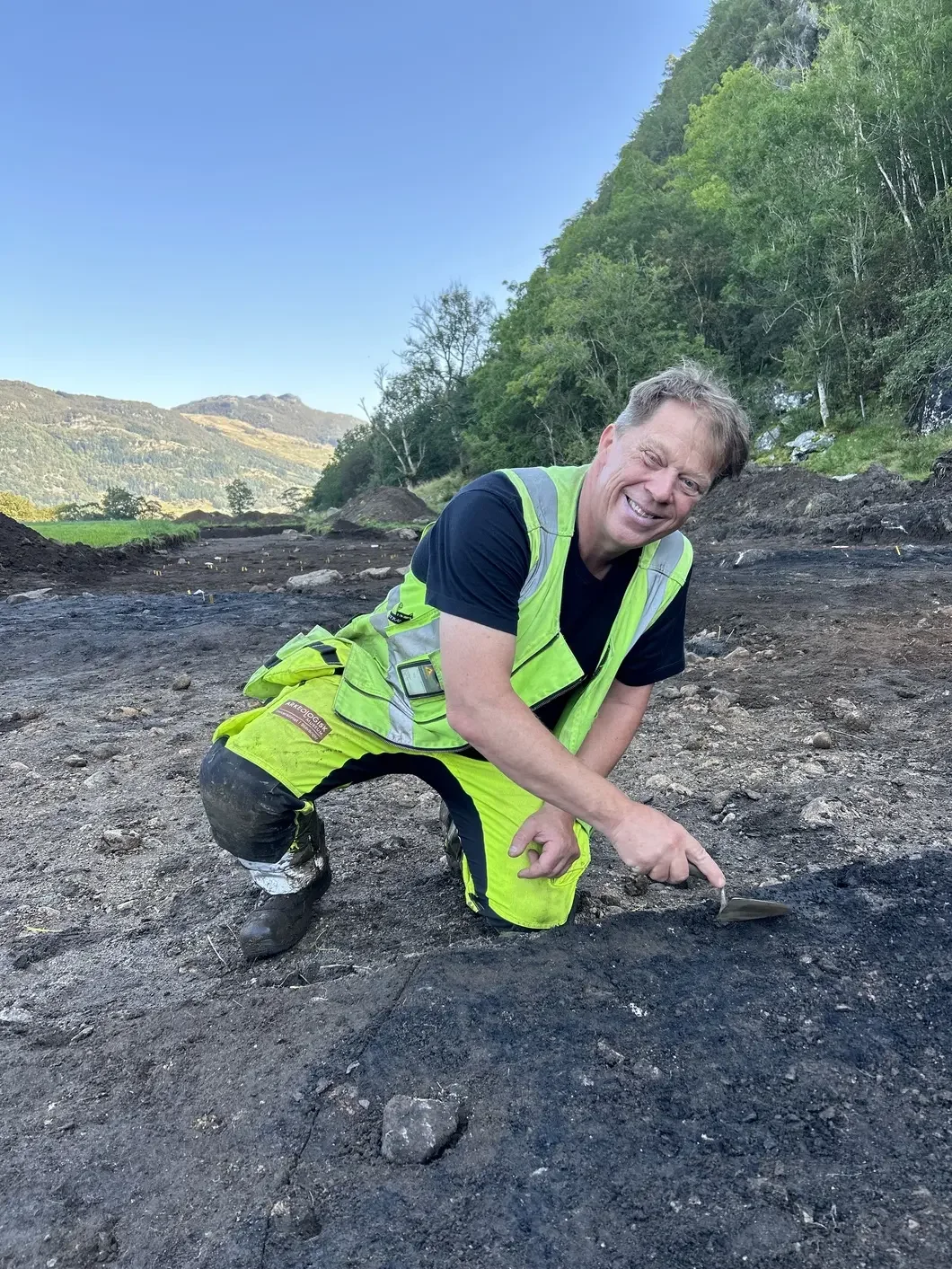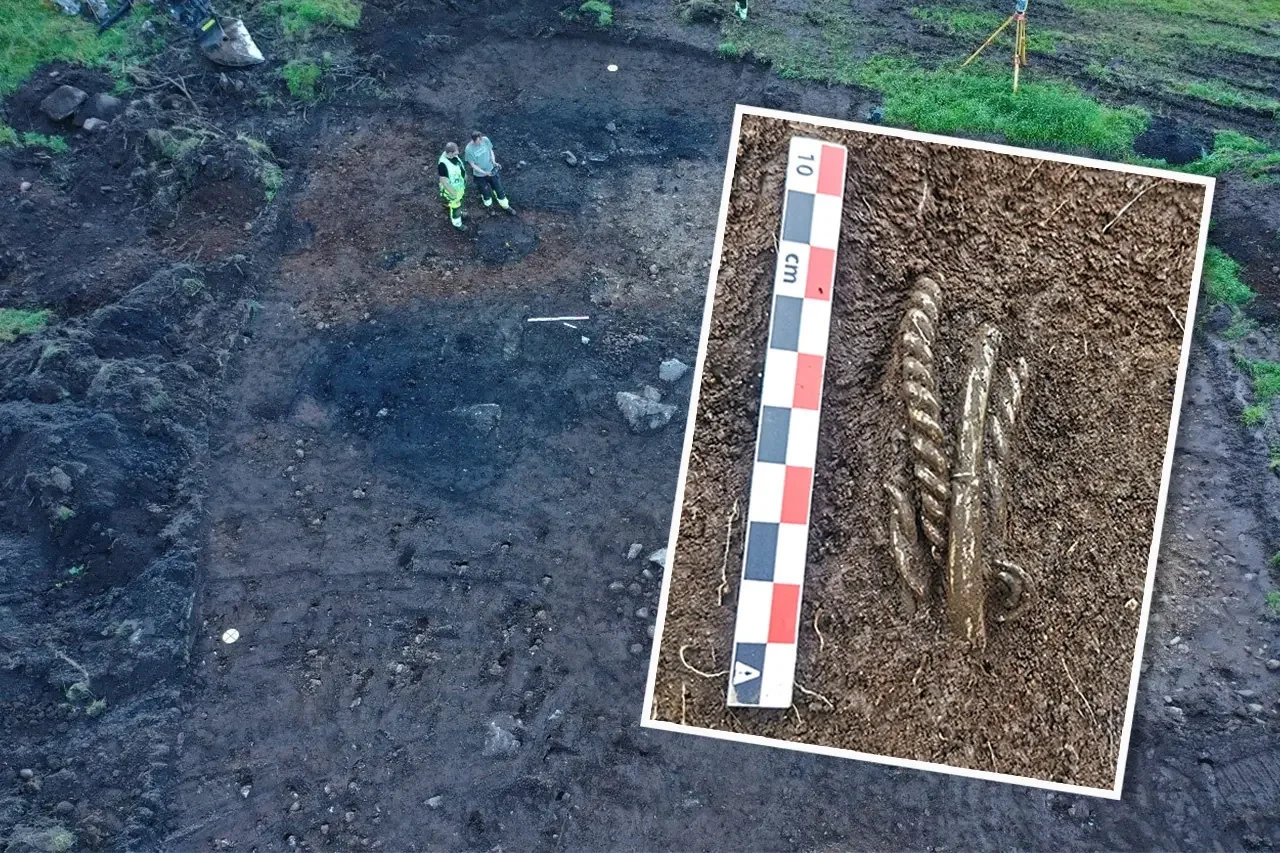In a stunning archaeological discovery, a 1,000-year-old Viking treasure, untouched for centuries, has been unearthed in the mountains of Årdal in Hjelmeland, Norway. This remarkable find, consisting of four intricately designed silver arm rings, has been hailed as a major breakthrough in understanding the Viking Age, offering an unprecedented glimpse into the life and society of the Norse people.
Archaeologists from the University of Stavanger’s Museum of Archaeology made the discovery while conducting a routine excavation ahead of a local farmer’s plans to build a new road. Hidden just seven inches beneath the surface, this treasure trove had been carefully buried in the soil under what was once a Viking farmstead. According to field archaeologist Ola Tengesdal Lygre, the discovery was initially thought to be mundane.

“At first, I thought it was just some twisted copper wires that you often find in agricultural land,” Lygre explained. “But when I saw several pieces lying together and realized they were silver, I knew we had found something truly exciting.”
A Glimpse of Viking Wealth
The silver arm rings, each adorned with unique designs, are believed to have been buried deliberately, perhaps in the face of an impending attack. This theory aligns with the historical context of the discovery, as the farm where the treasure was found had been burned down during a period of great unrest in the ninth century.
“If people living on this farm had to flee from an attack, it would be natural to hide the valuables they had before escaping to the mountains,” said Volker Demuth, archaeologist and project manager at the University of Stavanger.

This discovery sheds light on the significant wealth and influence of the Viking farm, which was likely a large and powerful estate. Excavators uncovered not just the silver rings but also remnants of soapstone pots, rivets, and knife blades, indicating a well-established and thriving settlement.
“We have found remains of soapstone pots, rivets, knife blades, and whetstones for sharpening tools. Here, they had full control of the entry into what is today Årdal,” Demuth noted, emphasizing the strategic importance of the location.
A Treasure Unmoved by Time
What makes this find particularly extraordinary is that the treasure remained in the exact location where it was originally buried—a rarity in archaeological discoveries of this kind.
“This is a unique find because we very rarely find such objects exactly where they were placed. As a rule, such valuable objects are discovered in plowed fields, where they have been taken out of their original context,” Demuth explained.

The fact that the silver hoard has remained untouched allows archaeologists to study it in its full historical context, providing new insights into the Viking Age. The bracelets bear similarities to silver necklaces found in Hjelmeland in 1769, suggesting a possible connection between the two finds. Although further excavations are needed to confirm this link, the discovery could provide additional clues about Viking trade routes, wealth distribution, and cultural practices.
Uncovering the Past, Piece by Piece
The archaeological team has taken great care in preserving the treasure, transporting the block of earth containing the silver rings to the Archaeological Museum in Stavanger. There, conservators have conducted X-rays and taken soil samples, which may reveal whether the rings were wrapped in cloth when they were buried. These additional findings could shed further light on the methods and practices Vikings used to protect their valuables.

Museum director Ole Madsen expressed his excitement about the discovery. “This is an absolutely fantastic find, which gives us unique knowledge about one of the most important eras in Norway, namely the Viking Age,” Madsen said.
The silver rings will eventually be put on display at the museum, offering the public a rare glimpse into the wealth and craftsmanship of the Vikings.
A Window into Viking Life
The discovery of this untouched Viking treasure offers more than just a collection of silver artifacts; it provides a deeper understanding of Viking society, economy, and culture. The absence of silver mines in Norway during the Viking Age means that all silver had to be acquired through trade, gifts, or raids, further emphasizing the wealth and connections of the Viking community that lived in Årdal.
As archaeologists continue their excavation, the hope is that this treasure will be just the beginning. With each new discovery, researchers gain valuable insights into how the Vikings lived, worked, and protected their wealth during a time of great uncertainty and conflict. The untouched silver hoard, hidden away for more than a millennium, now offers a rare window into a civilization that continues to captivate the world.



Leave a Comment